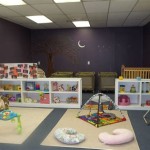How to Decorate a High Ceiling Living Room
High ceilings in a living room can create a dramatic and spacious feel, enhancing the overall aesthetic of a home. However, decorating these expansive spaces presents unique challenges. Without careful planning and execution, a high-ceilinged living room can feel cold, impersonal, and disproportionate. This article explores effective strategies for decorating a living room with high ceilings, focusing on principles of proportion, scale, and visual interest.
Addressing Scale and Proportion
The most critical aspect of decorating a high-ceilinged living room is addressing the scale and proportion of the furnishings and décor. Standard-sized furniture can appear dwarfed in such a large space, making the room feel empty and unbalanced. The goal is to create a sense of visual harmony by using elements that are appropriately sized and thoughtfully placed.
One effective strategy is to opt for larger furniture pieces. Oversized sofas, substantial armchairs, and expansive coffee tables can help fill the vertical space and ground the room. Consider furniture with a higher back, such as a tall sectional sofa or armchairs with prominent headrests, to draw the eye upward and create a more balanced visual effect. Avoiding petite or low-profile furniture minimizes the risk of the room feeling sparse.
In addition to furniture, the placement of artwork and wall décor plays a crucial role in establishing proportion. Small pictures hung at eye level will be completely lost in a room with high ceilings. Instead, consider using large-scale artwork, such as oversized paintings or tapestries, to command attention and fill the vertical space. Alternatively, grouping multiple smaller pictures together to create a gallery wall can achieve a similar effect, providing visual interest and effectively utilizing the height of the walls.
Lighting is another vital component in addressing scale and proportion. Standard-height lamps may not provide adequate illumination in a high-ceilinged room, and they can visually appear insignificant. Implementing a multi-layered lighting scheme is recommended, incorporating elements such as chandeliers, pendant lights, floor lamps, and strategically placed spotlights to illuminate both the upper and lower portions of the room. A large, statement chandelier can serve as a focal point, drawing the eye upward and adding a touch of elegance to the space. Floor lamps provide ambient lighting at a lower level, creating a sense of intimacy and warmth.
Window treatments also contribute to the overall sense of proportion. Short curtains will visually truncate the height of the room, exacerbating the feeling of imbalance. Instead, opt for floor-to-ceiling drapes that extend from the top of the wall to the floor. This will elongate the windows and create a sense of verticality, enhancing the overall aesthetic of the room. Choose heavy fabrics with rich textures to add depth and dimension to the space.
Creating Visual Interest and Breaking Up Vertical Space
High ceilings, while aesthetically pleasing, can sometimes create a sense of emptiness and lack of visual interest. Breaking up the vertical space is crucial to prevent the room from feeling cavernous and impersonal. Several techniques can be employed to effectively achieve this goal.
Architectural details can add significant visual interest to a high-ceilinged living room. Crown molding, wainscoting, or decorative beams can create horizontal lines that break up the vertical expanse and add a sense of character and sophistication. If the room lacks existing architectural details, consider adding them to create a more visually appealing space. Wood beams, for example, can add a rustic or industrial touch, while intricate crown molding can enhance the room's elegance.
Color can also be used strategically to break up the vertical space. Painting the upper portion of the walls a lighter color than the lower portion can visually lower the ceiling and create a more intimate atmosphere. Alternatively, using a bold accent color on a single wall can draw the eye and add a focal point to the room. Darker colors tend to absorb light and make a space feel smaller, while lighter colors reflect light and create a sense of openness. Carefully consider the color palette to achieve the desired effect.
Shelving and display units can also effectively break up the vertical space while providing functional storage. Tall bookshelves or étagères can fill the wall space and create a visually appealing display area for books, artwork, and decorative objects. Varying the heights of the shelves and incorporating different types of items can add visual interest and prevent the display from feeling monotonous. Consider incorporating plants into the shelving arrangement to add a touch of greenery and life to the room.
Textural elements can also contribute to visual interest. Combining different textures, such as smooth fabrics, rough wood, and metallic accents, can add depth and dimension to the space. A textured rug, for example, can add warmth and visual interest to the floor, while cushions and throws with varying textures can add comfort and style to the furniture. Incorporating natural materials, such as stone or brick, can also add a sense of authenticity and character to the room.
Optimizing Lighting and Acoustics
Lighting and acoustics are often overlooked when decorating a high-ceilinged living room, but they are essential for creating a comfortable and inviting space. Poor lighting can make the room feel dark and unwelcoming, while inadequate acoustics can result in echoes and poor sound quality. Addressing these issues is crucial to creating a functional and aesthetically pleasing living room.
As previously mentioned, a multi-layered lighting scheme is essential for illuminating a high-ceilinged living room. In addition to chandeliers and floor lamps, consider incorporating recessed lighting, track lighting, and sconces to provide ample illumination throughout the space. Recessed lighting can provide general ambient lighting, while track lighting can be used to highlight specific areas or artwork. Sconces can add a touch of elegance and provide soft, indirect lighting.
Natural light is also an important consideration. Maximize the amount of natural light entering the room by using sheer curtains or blinds that allow sunlight to filter through. Consider adding skylights to bring in even more natural light. The placement of furniture should also be considered in relation to the windows to ensure that natural light is not blocked. Mirror placement can also amplify the light in a space, bouncing light to darker corners.
Acoustics are often a concern in high-ceilinged rooms due to the large volume of space and hard surfaces. To improve acoustics, consider incorporating sound-absorbing materials into the décor. Rugs, curtains, and upholstered furniture can all help to absorb sound and reduce echoes. Wall hangings, such as tapestries or acoustic panels, can also be used to improve sound quality. Consider adding soft elements to the room, such as throw pillows and blankets, to further absorb sound.
Arranging furniture strategically can also help to improve acoustics. Grouping furniture together in conversational areas can help to contain sound and create a more intimate atmosphere. Avoiding placing furniture directly against walls can also help to reduce echoes. Consider adding plants to the room, as they can help to absorb sound and improve air quality.
Incorporating these strategies will assist in creating a high-ceilinged living room that is both aesthetically pleasing and functionally sound, maximizing the potential of the space while maintaining a sense of comfort and balance.

How To Decorate A Room With High Ceilings Designed Ceiling Living Decor Home

How To Decorate Living Rooms With High Ceilings Tall Ceiling Room Built In Shelves

How To Decorate Living Rooms With High Ceilings

How To Decorate A Room With High Ceilings Designed

Before After Contemporary High Ceiling Living Room Decorilla

5 Ways To Get This Look High Ceiling Living Room Infarrantly Creative

How To Decorate A Living Room With High Ceilings

Decorating A Living Room With High Ceilings How To Decorate

How To Decorate A Living Room With High Ceilings Redesigned Classics

Designer Approved Tips To Make The Most Of High Ceilings








